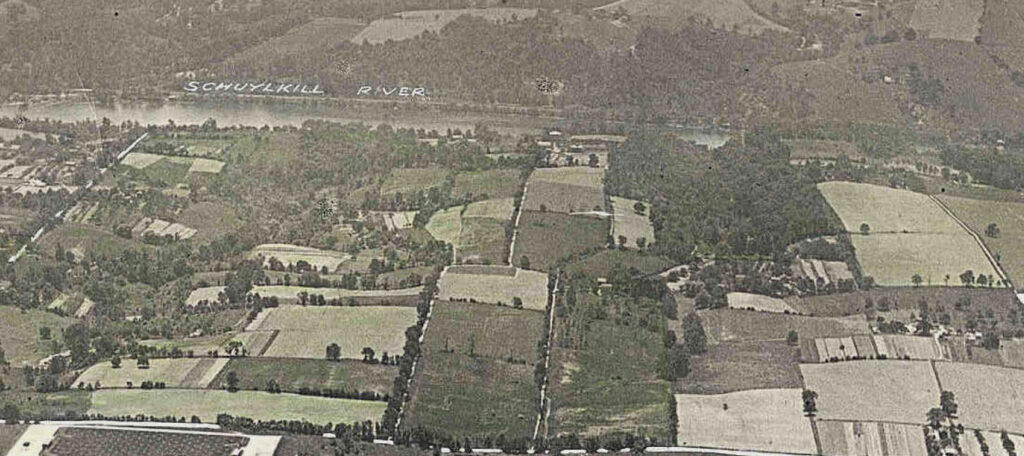 One of the pleasures of teaching and talking about our Roxborough land are our historic place names, so many of them Lenape in origin: Wissahickon, Conshohocken, Manatawna, Cinnaminson, Manayunk. Widen the lens a bit, and Philadelphia maps burst with Lenape words: Shackamaxon, Wingohocking, Kingsessing, Tulpehocken, Tioga.
One of the pleasures of teaching and talking about our Roxborough land are our historic place names, so many of them Lenape in origin: Wissahickon, Conshohocken, Manatawna, Cinnaminson, Manayunk. Widen the lens a bit, and Philadelphia maps burst with Lenape words: Shackamaxon, Wingohocking, Kingsessing, Tulpehocken, Tioga.
Sadly, Phildelphians are taught too little, if anything, about the Lenape, the original people here, our First People, and too much that is taught is at best misleading and too often wrong. That statue of a Lenape chief that guards a bluff above the Wissahickon? He is carelessly outfitted as a Western Plains Indian, and historians agree there were no councils on Council Rock.
Deborah Del Collo, an archivist for the Roxborough, Manayunk, and Wissahickon Historical Society, and author of the excellent “Images of America: Roxborough,” wrote in its introduction, “The words manatawney and manaiung” the latter her transliteration of Manayunk, “are intertwined with the beginning of Roxborough.” Manatawna is, of course, the name of a narrow street that connects Ridge Avenue just past Cathedral Avenue with Hagy’s Mill Road; you can see the road in the 1926 aerial photo of Upper Roxborough included here– it’s on the far right; that’s Ridge Avenue slicing through the foreground.
But an 1895 railroad atlas in my office curiously shows the word “Manatawna” used to mark the small village of homes near where that narrow street connects to the Ridge, as if Manatawna was a small town just outside the larger Roxborough. Readers, could this be true?
Del Collo wrote that “the Manatawney, which is currently Ridge Avenue in Roxborough, is a path from the native plantations of upper Roxborough to the Falls of the Schuylkill in the current East Falls section of Roxborough.” So she indicates that perhaps Manatawney was the original name of the Ridge. A tawney, she writes, is an open road and mana could mean “raging” or “god,” so she translates Manatawney as “an open road from our creator.”
While I love this, Wikipedia– I know, don’t believe everything you read online– includes a long list of Lenape place names under the entry “Lenapehoking,” the Lenape word for this land where we all live. They include Manatawny on this list, here with no “e” before the “y,” and use it to refer to a creek just outside Pottstown, and say the name means “place where we drink.”
Which is ironic, as many people know the derivation of Manayunk, which is usually said to be “place where we drink,” everyone ironically chuckling at modern Manayunk’s collection of bars and restaurants. Del Collo writes, “The addition of iung (water or stream) to mana in manaiung translates to a ‘raging river’ which makes perfect sense since the waters of the Schuylkill bordering Roxborough were raging waters in Lenape days.” To make it navigable, the famous Falls of the Schuylkill of course were buried under water from the Flat Rock dam.
Wikipedia hews to the more traditional translation of Manayunk, “place where we go to drink.” I like Del Collo’s translations on both counts, but I’d love for Lenape scholars and native speakers to weigh in.
“Schuylkill,” of course, is a Dutch place name, translating to “hidden river.” But what did the Lenape call this important river? Pennsylvania Heritage published a 2013 piece by historian Joan Wenner, “A River Runs Through Penn’s Woods: Tracing the Mighty Schuylkill,” where she writes, “Once the grand watercourse was home to the Delaware Indians who called it the manaiunk meaning ‘rushing and roaring waters.’”
Apart from all the different spellings of the word, Benner indicates that the Lenape called the river itself Manayunk, and she backs up Del Collo on the “roaring” part. Manayunk: roaring water. Great name.
Nobody disagrees on Wissahickon; I’ve always heard it translated as “catfish stream.” But Del Collo writes that “Wisa can mean ‘catfish’ or ‘yellow,’ and hickon means ‘mouth of a large stream or tide;’ therefore Wissahickon literally means ‘a large catch of catfish found at the mouth of the creek.’” This makes way more sense to me: the catfish would have been in the Schuylkill– pardon me, the Manayunk– so the Lenape caught fish congregating in the Manayunk where the Wissahickon enters it, today where the Canoe Club sits.
Conshohocken translates to “pleasant valley” or “elegant land.” And Cinnaminson, that street that falls off the Ridge at the 5th District building, could either mean “rock island” or “sweet water.”
And my favorite place name? By translation, it’s Tulpehocken, the name of a creek and both street and train station in Germantown. That translates as “land of turtles,” as the turtle was sacred to the Lenape, all of us riding on the back of a giant turtle, the image that Roxborough often uses to describe itself, a la that mural above the 7-Eleven on Ridge. We all live on Tulpehocken.
And we all live in Lenapehoking, the ancestral lands of the Lenape, a people wrongly renamed the Delaware. The Schuylkill Center acknowledges that our 340-acre forest was once the haunts of the Lenape, and we would like to weave that story back into our landscape, and find more ways to connect more of us to that untold story.
I’ll continue to share what I discover with you all.
By Mike Weilbacher
